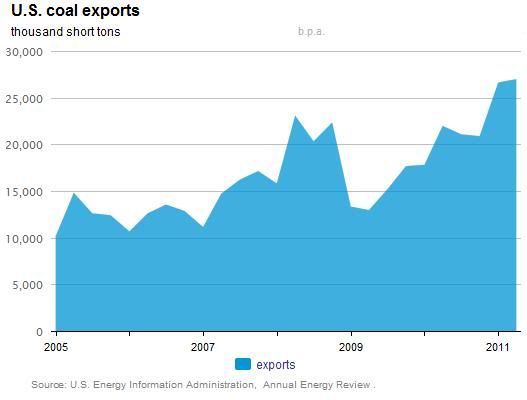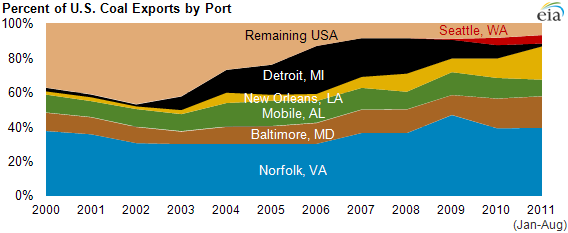As my town of Boulder embarks upon an effort of municipalization of our electricity, which will involve many legal dollars in "negotiations" with Excel, I struggle with the concept because the nearby Wyoming coal which we want to stop using will go to Asia instead, as it is already doing, and burn in dirtier facilities than the ones we have. The goal, of course, of municipalization is to be energy stewards and use clean, renewable energy rather than burning coal to reduce greenhouse emissions.
Whenever I run into activists for municipalization, I ask them how they answer the question about the coal going to Asia if we don't use it, resulting in an even larger carbon footprint. One-hundred percent of the ones I've asked have been unaware of the issue, including an NCAR climate scientist friend.
No issues are simple when one considers all aspects. Here in this case, as usual, the only answer seems to be that we become smaller users or consumers of electricity while increasing energy efficiency if we want to make any real progress. So far here in the U.S., our electrical consumption continues upwards.

Six seaports account for 94% of U.S. coal exports, which are dominated by coking coal:

A recent report from the e.i.a. was noteworthy concerning our coal exports:
Also see previous posts:
source: e.i.a.
Whenever I run into activists for municipalization, I ask them how they answer the question about the coal going to Asia if we don't use it, resulting in an even larger carbon footprint. One-hundred percent of the ones I've asked have been unaware of the issue, including an NCAR climate scientist friend.
No issues are simple when one considers all aspects. Here in this case, as usual, the only answer seems to be that we become smaller users or consumers of electricity while increasing energy efficiency if we want to make any real progress. So far here in the U.S., our electrical consumption continues upwards.

Six seaports account for 94% of U.S. coal exports, which are dominated by coking coal:

A recent report from the e.i.a. was noteworthy concerning our coal exports:
- Over 68% of total U.S. coal exports in 2010 were coking coal, which is used in making iron and steel.
- Steam coal, used to generate electricity, comprised the remaining 32% of exports.
- Overall U.S. coal exports have been resurgent, reaching nearly 71 million tons in the first eight months of 2011—the highest level in decades—driven by high global demand and significant weather disruptions of Australian coal exports.
- Coal exports from Seattle, Washington have also risen sharply in recent years as significant coal production in the Powder River Basin seeks access to growing Asian coal markets.
Also see previous posts:
- Coal Production in the Top Five Producing Nations Grew by 98% from 2000-2010
- 2010 Metallurgical Coal Exports Pie Graph
source: e.i.a.